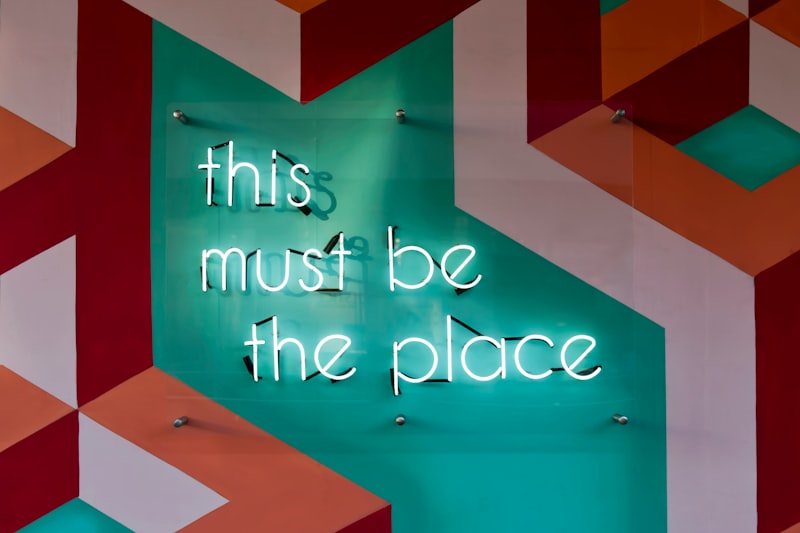We tend to think of “best customers” as those who spend the most money. That's important, but it's just the surface. Your best customers hold a wealth of untapped power:
- Advocates: They organically bring in new business with referrals and testimonials.
- Feedback goldmines: They're invested in your success and offer invaluable insights.
- Ideal client blueprints: They help you refine your targeting, saving time and effort.
Identifying these gems isn't rocket science, but it requires going deeper than the usual metrics. Let's break it down.
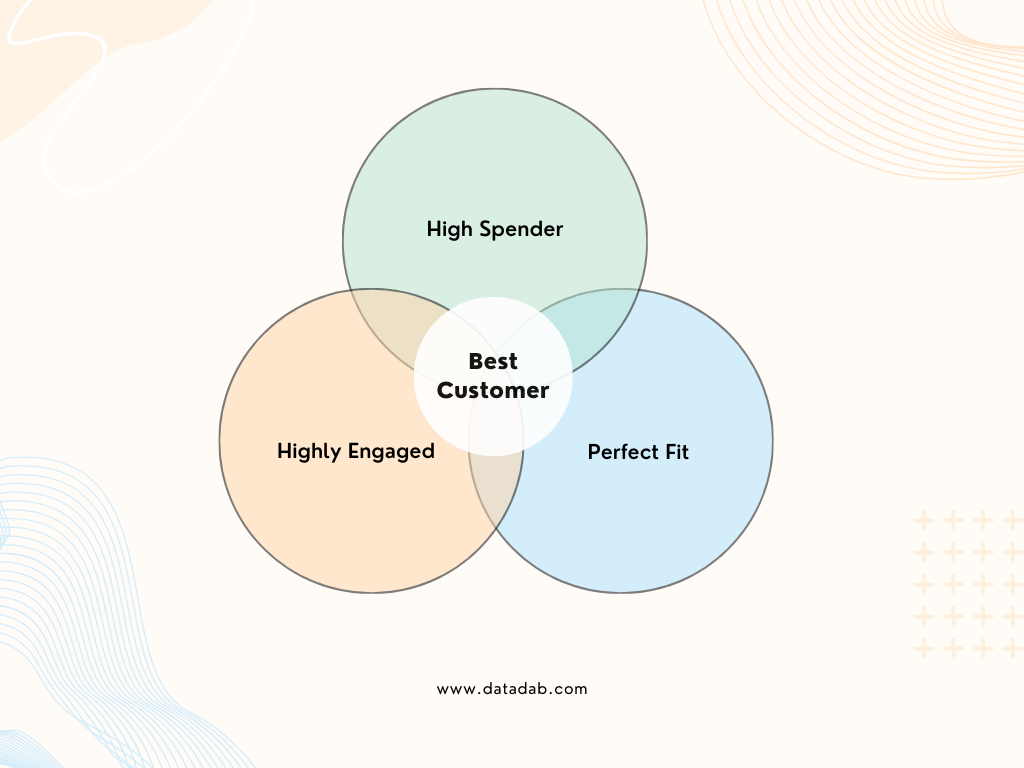
The “Why?” Factor: Beyond Spending Habits
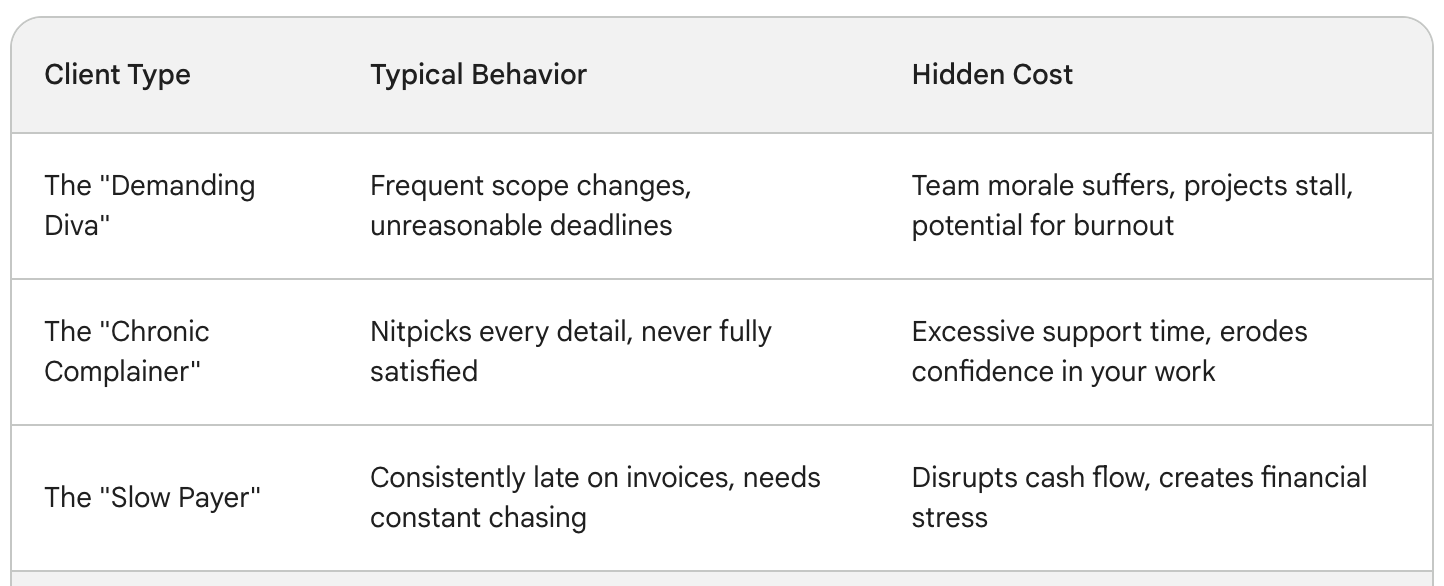
Here's where things get exciting. To find your truly exceptional customers, these factors deserve as much attention as spending:
Engagement:
- Do they actively open your emails and engage with your content? A passionate reader matters as much as a buyer, signaling brand affinity that can convert later.
- Do they participate in webinars, leave insightful comments, or reach out on social media? This indicates a genuine connection with your brand.
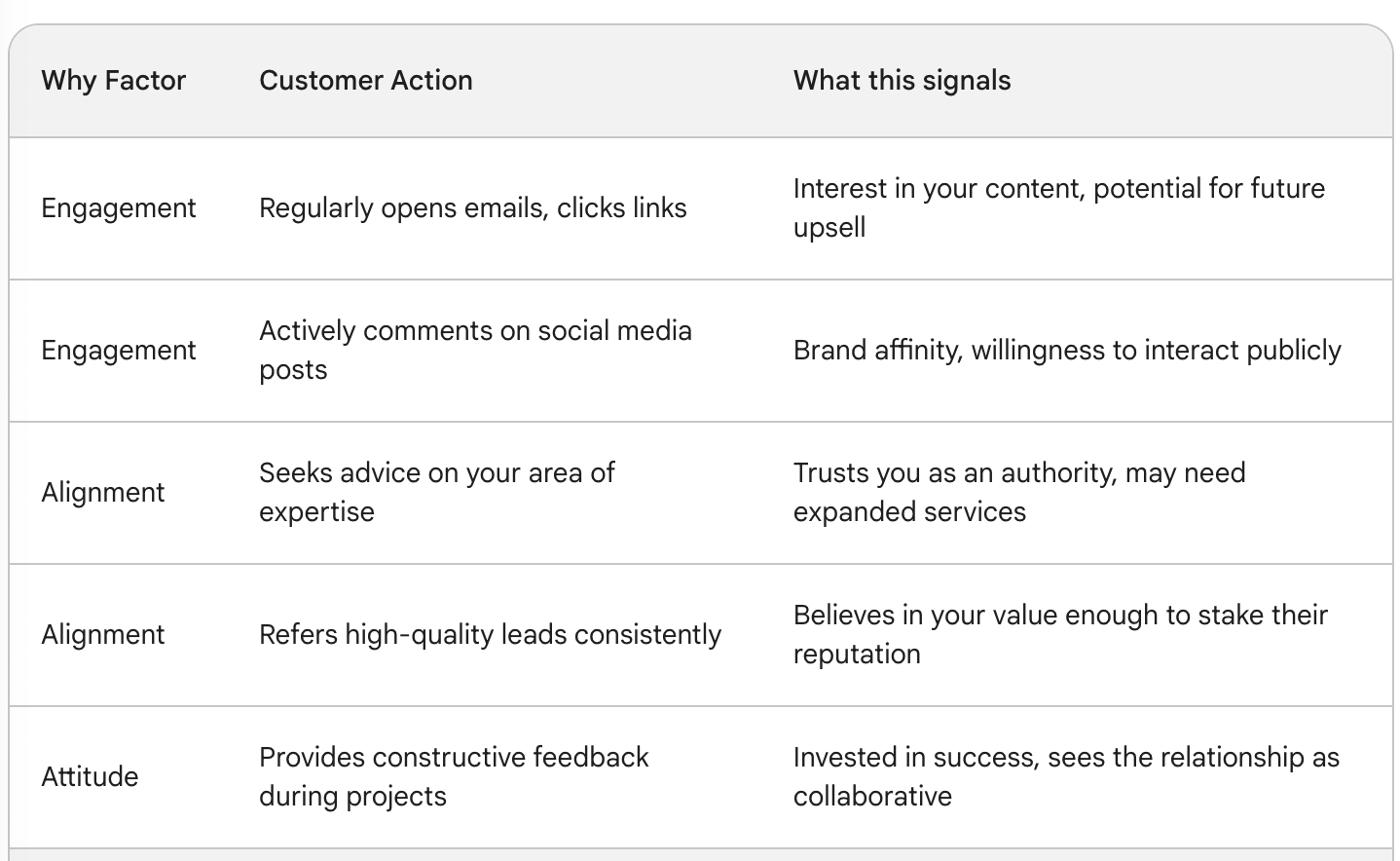
Alignment:
- Do their values and goals match your company's offerings? A natural fit leads to lower churn and smoother collaborations.
- Do they appreciate the specific solutions you provide? If what you offer is core to their success, the relationship will naturally thrive.
Attitude:
- Are they proactive and excited to explore new ideas? This fosters a collaborative environment and potential for greater impact.
- Are they patient yet communicative when issues arise? A collaborative, rather than adversarial, attitude during difficulties cements loyalty.
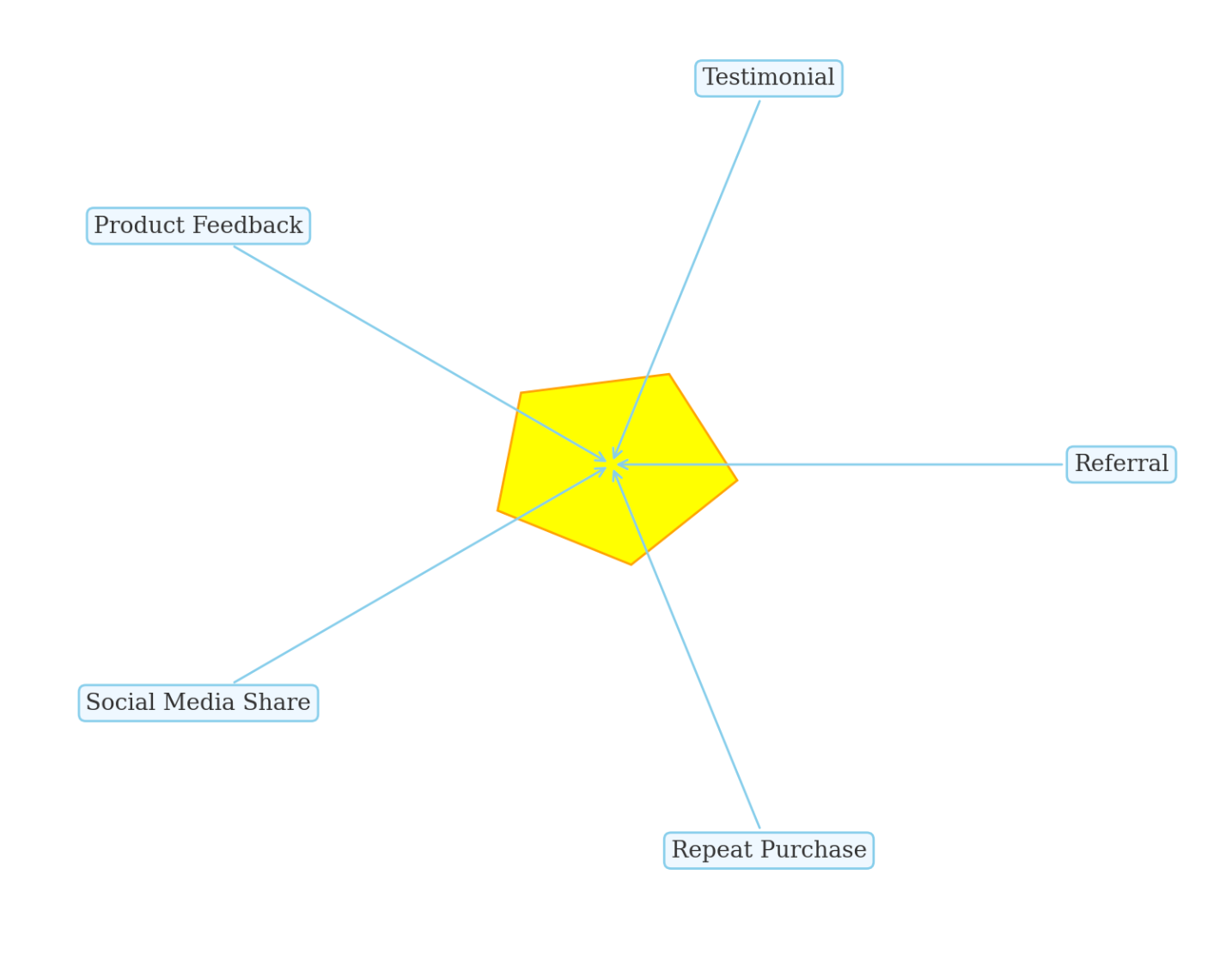
Pinpointing the Patterns of Your Best Customers
Now let's move into the practical realm. Here's how to uncover these hidden patterns:
Surveys (with a twist): Instead of basic demographics, ask open-ended questions about their challenges, why they chose you, and how your work impacts their business. Qualitative insights here are gold.
Client Success Calls: Schedule one-on-one calls with your happiest clients. Go beyond project results and ask about their current goals and the ideal evolution of your partnership. This demonstrates your investment in their success.
Referral Tracking: Which clients consistently recommend you to quality leads? These are your top advocates, and studying their profiles yields vital clues.
Let's illustrate this with a real-life example. Let's say you're a marketing agency specializing in SEO-backed content creation for SaaS companies. Through the above analysis, you notice a pattern: your best clients are mid-size tech companies looking to establish themselves as thought leaders. This insight helps you refine your messaging, target more precisely, and even develop new service packages tailored to this niche.
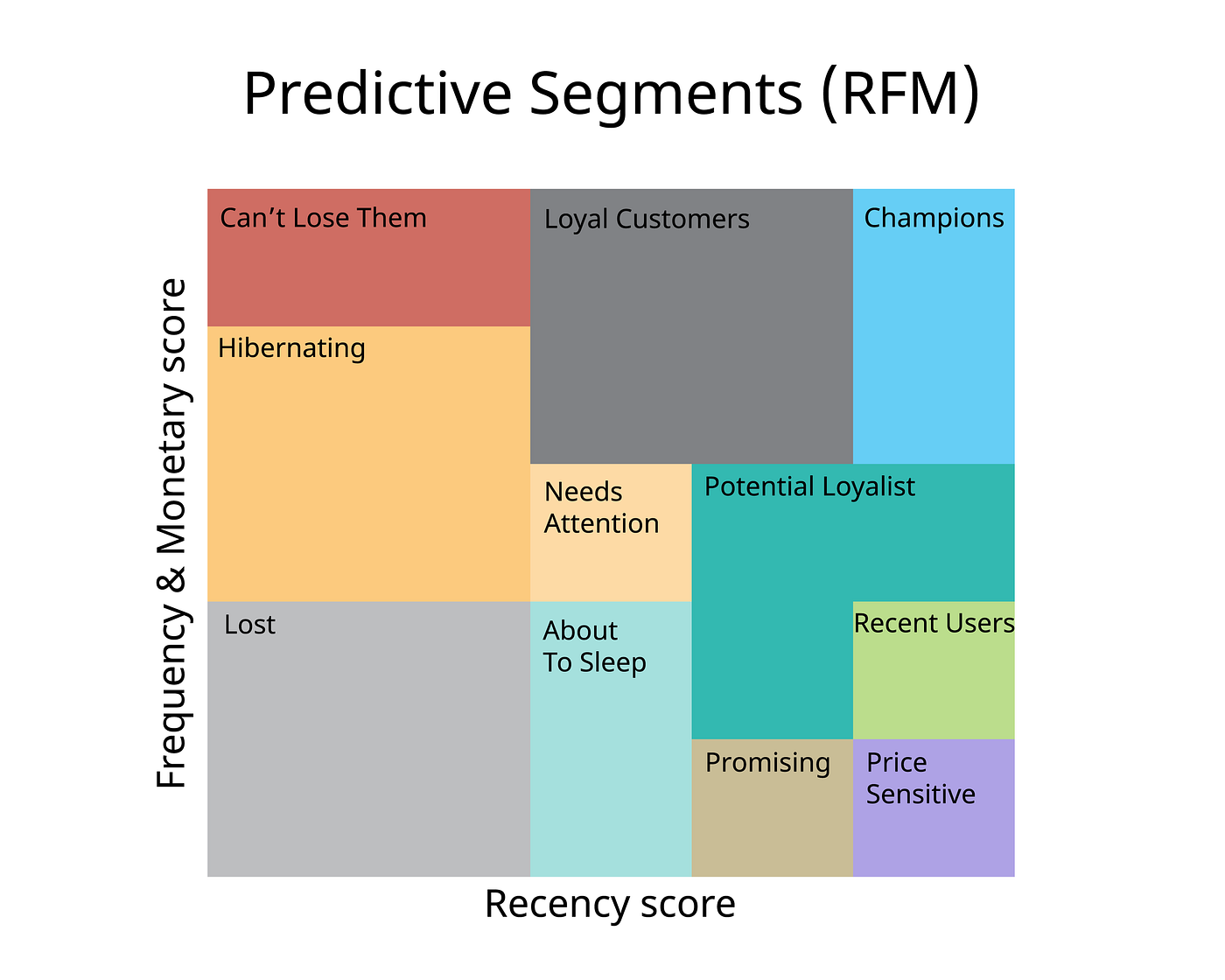
The RFM Model: A Powerful Lens
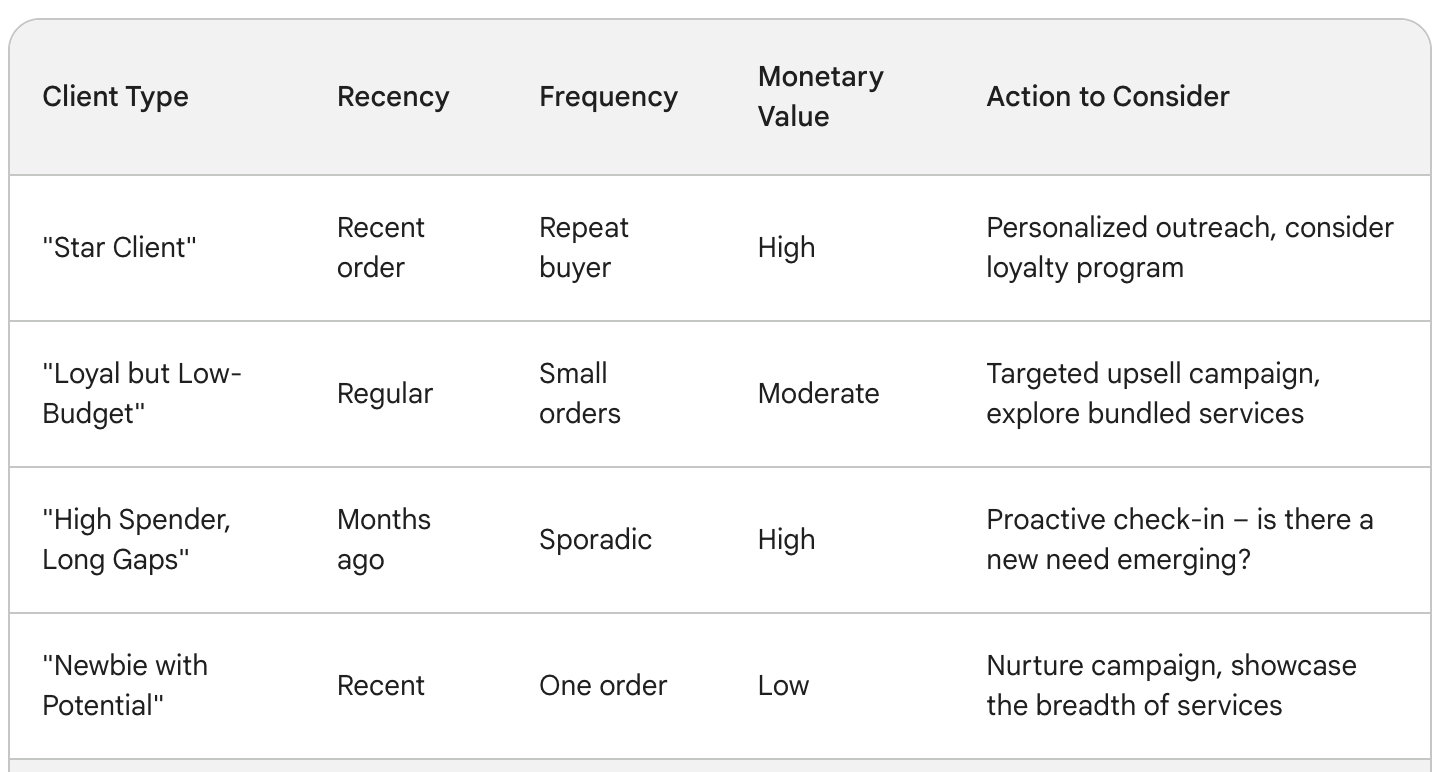
The Recency, Frequency, Monetary (RFM) model is a classic marketing tool but deserves a fresh perspective when identifying your best customers. It's NOT just about isolating big spenders. Look at it this way:
Recency
- A recent purchase signals continued need for your services. But has their activity changed? Increased interest in specific offerings shows the relationship is evolving positively.
- A recent surge in support tickets could indicate a growing problem requiring proactive attention, even if they're a big spender.
Frequency
- Steady, repeat business is fantastic, but are they utilizing your full range of services? Is there room to cross-sell and up-sell, expanding their value to you and to them?
- Frequent but small purchases may indicate someone on the verge of becoming a top-tier client. It's an opportunity for personalized outreach.
Monetary
- We all love high-spending clients but watch out for “one-hit wonders” – a burst of spending followed by silence. It could point to misaligned expectations or a shift in their priorities.
- Someone steadily increasing their spend over time could be your next star client. Nurture them!

Tech Tools to Help
Let's be realistic – doing this manually can be a time-sink. Here's where tech becomes your friend.
CRM Integration: A well-structured CRM that pulls in email data, support tickets, and sales records paints a rich behavioral picture. Look for integrated analysis tools or specialized dashboards for RFM scoring.
Client Feedback Platforms: Services like Delighted or Typeform for surveys let you gather insights at scale while maintaining a personalized feel.
Social Listening: Track mentions and sentiment around your brand. Who's constantly raving about you organically? These could be untapped advocates.
Transforming Insights into Action
Identifying your best customers is exciting, but it's the first step. Here's how to make it actionable.
Dedicated “Wow” Programs
Curate special onboarding experiences, exclusive content, or even surprise gifts for your top-tier customers. Make them feel truly valued.
Client Spotlights
With permission, feature your best clients in case studies and testimonials. This reinforces their positive experience, attracting similar clients and further cements the relationship.
Personalized Outreach
Take a bespoke approach to sales and cross-selling offers for your top-tier clients. Understanding their deeper needs makes your offers irresistible.
Let's say through your analysis you identified a significant segment of the best customers in the healthcare startup sector. You can tailor your entire outreach strategy to address their pain points, showcase relevant past work, and even create a niche-specific service package. This focused approach is far more effective than generic pitches.
A Nuanced Journey, Not a Checklist
Identifying your best customers is a dynamic, evolving process. It's about understanding what makes a client relationship thrive beyond surface-level metrics. By embracing this nuanced perspective, you unlock the potential for strategic growth, amplified brand loyalty, and ultimately, a product that consistently delivers exceptional results for the right people.
FAQ
- We work with a variety of clients. How can I still use this “best customer” concept?
Even with diverse clients, identifying recurring patterns within your top-performing relationships is incredibly valuable. Start by segmenting clients based on industry, service type, or even project size. Then, apply the blog's principles to each segment to identify the “best of the best” within those groups. This allows for more targeted messaging and outreach that still benefits from the nuanced approach.
2. What if my 'best' customers aren't the biggest spenders?
This is where focusing on the “why” factors is crucial. A smaller but highly engaged client who consistently refers business, leaves glowing reviews, and champions your work may be significantly more valuable long-term than a one-time, high-budget project. Nurturing these relationships can lead to future growth or even open up new service areas.
3. Isn't it risky to focus on just a few 'best' customer types?
Diversification is still important, but understanding your ideal clients doesn't mean excluding everyone else. It actually makes your outreach more efficient – you save time by not chasing poor-fit leads. It also helps you identify “on the verge” clients who you might be able to transform into your best customers with the right nurturing strategy.
4. How often should I re-evaluate my 'best' customer profiles?
Ideally, this is a continuous process! As your business evolves, the type of clients who drive your success might change too. Make a point to revisit your RFM analysis and survey results quarterly. Additionally, significant changes to your services or market conditions warrant a fresh look.
5. My CRM is pretty basic. Can I still do this kind of analysis?
Start with what you have! Track repeat purchases, purchase frequency, and total revenue per client over time, even if it's in a simple spreadsheet. Supplement with notes on things like client responsiveness, project smoothness, and their expressed goals to start building those qualitative insights. As your company grows, you can invest in more sophisticated CRM tools to automate the process.
6. How do I gather feedback without annoying my clients?
Make it valuable for them. Keep surveys very short and focused. Offer an incentive (e.g., small discount, industry insights report) in exchange for their time. Position it as helping you better serve them. If feasible, personalized phone or video calls, even brief ones, can uncover far more than an impersonal survey form.
7. I'm seeing patterns, but how do I actually use this information?
Tailor your messaging! Update your website copy and outreach materials to speak directly to the pain points and aspirations of your ideal customers. Create case studies showcasing results for similar clients. Consider offering “niche” packages if there's enough demand within your best customer segment.
8. What's a realistic timeframe for seeing results from this approach?
Identifying your best customers can be relatively quick, but transforming that into broader growth takes time. Focus on consistent implementation. Track your referral rate, quality of new leads, and client churn rate over several months to gauge the impact of your increasingly targeted efforts.
9. Are there any ethical considerations with focusing on specific client types?
Ensure you're not filtering based on discriminatory factors. Focus on fit with your services and company values instead. It's also important to maintain an equitable approach for all clients. Your 'best' customers might deserve special treatment, but no client should feel neglected.
10. This feels like a lot of work on top of everything else. Is it worth it?
Unequivocally yes! In the long run, working with the right clients saves you time, reduces headaches, and fuels sustainable growth. It's more enjoyable too! Investing the effort upfront ensures your marketing efforts are laser-focused on attracting leads far more likely to become those “star” clients who make all the difference.



